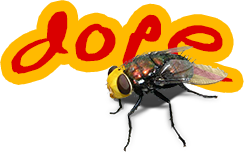Quickly Understanding Selenium
posted under category: Software Quality on September 6, 2008 by Nathan
Selenium is an open source, simple web site testing and automation platform. I say it's a "platform" because it can't really be classified as just a tool, a language, API or a full application, but rather to a degree, all of these.
The basic idea is to create, using very plain, easy HTML, a repeatable script that is then executed by a Selenium runner.
I recommend using the Selenium IDE to create your first script. It's an add-on to IE and Firefox that records your clicks. Save it to a file (it generates plain HTML) and you can repeat it later on. It won't always work perfectly, however, so you can edit it with any text or HTML editor. You just need a Selenium language reference to get by.
Selenium actions and accessors are the language you program your scripts in. Generally, you would use the click action, type to enter values into forms and things like assertText to make sure certain content exists.
One part of using the language you will have trouble with is selecting elements. Hopefully, you use uniquely named text links everywhere. If not, Selenium supports XPath very nicely. For me, it's a matter of sprucing up my XPath skills, something I wanted to do anyway.
Selenium scripts consist of a table with three columns. The first column is the action to perform. The second column is like the first argument of a function, usually this is the item to perform the action on and is almost always used. The third column is like the second argument in a function, usually the content of the action like the text to enter into the form item from the second arg. This column is not always used.
Selenium scripts must run within your web browser, however, different tools to automate your browser exist:
The Selenium IDE will run a file off your disk. This is perfect for single scripts and quick browser automation.
Selenium Core is a javascript application that runs on your web site - put it on your dev/QA site. Being a javascript application, there is no server-side interaction and nothing to install. This method requires your scripts to live on the local web site as well (browser security). This is actually very natural feeling, as then you can check them into your source control (you HAVE source control, right?).
(jump break)
Selenium RC (remote control) allows you to control tests from a remote browser on a different server. It even allows you to take screenshots. I haven't used this yet.
If you are testing a large application, you should make a test suite. It's a simple HTML document that links to your different test cases. With Selenium Core, you can load your suite and run all your cases in order. It will go through each one and give you a pass/fail summary like any good QA tool.
You can also use Selenium for easy web automation. I used it, for example, to automate the steps needed to log into a timer system and enter my daily time.
Selenium goes much deeper than this, but my blog post doesn't. Read up about it on the OpenQA web site.
